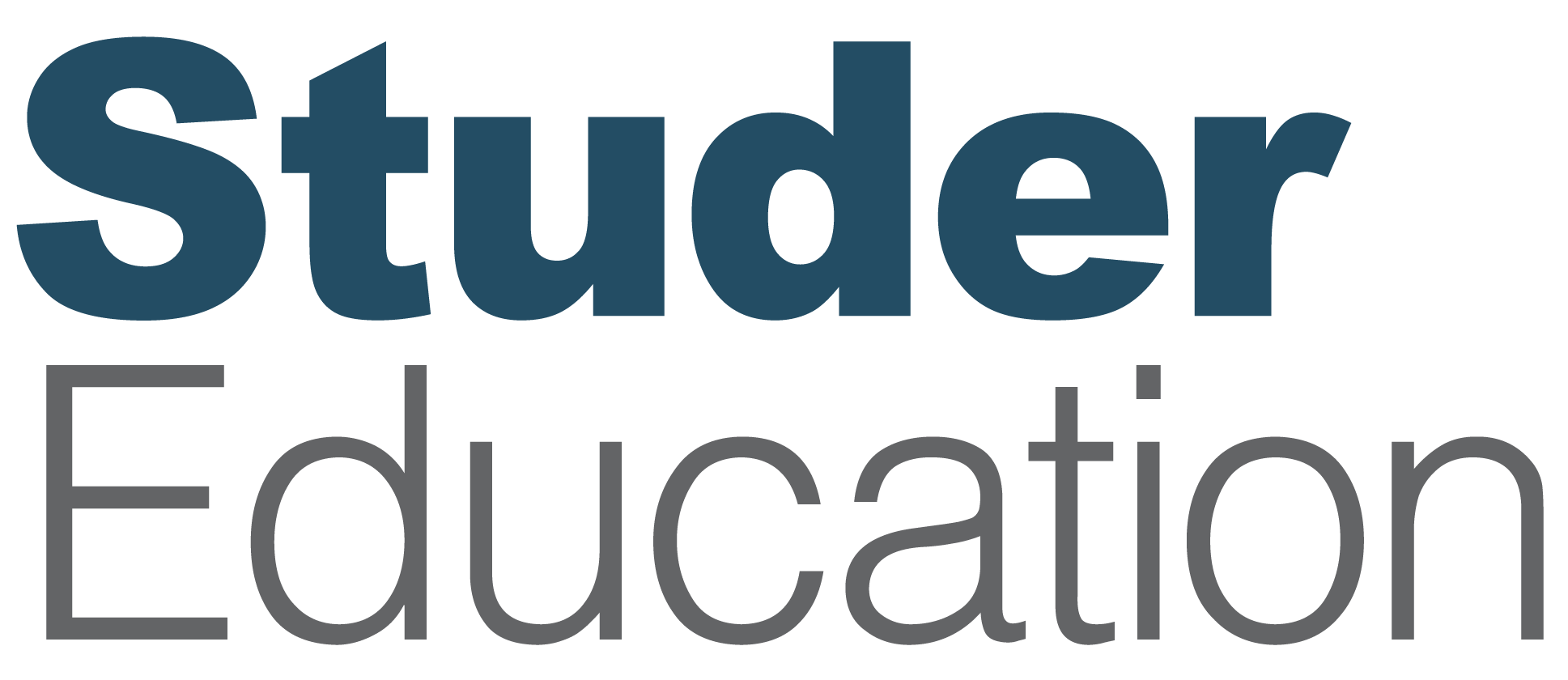
Creating a learning environment modeled on a healthy family unit might sound unconventional, but at Child Development Centers of Erie, Pennsylvania, it works. Join County Director Pam Sampsell and Lead Preschool Teacher Kaylee Kellerman as they share with Dr. Janet Pilcher their unique approach to help students ages 0-5 learn emotional self regulation. Listen as Pam and Kaylee share how classroom families and “wishing well” routines foster a sense of belonging and mutual respect so all kids in their care can thrive.
Recommended Resources
Latest Episodes
Kaylee Kellerman: So the early years of childhood are the best opportunity for a child’s brain to develop the connections they need to be healthy, capable, successful adults.
[Intro music plays in background]
Introduction
Janet Pilcher: Hello everyone, welcome to today’s podcast. Last week I celebrated our 350th episode with an expression of gratitude. This week I follow up with heartfelt work from the Child Development Center. It’s about a leader and teacher making critical decisions to improve what they offer to zero to five-year-old children and the services that they offer to their families.
Let me take a minute and remind you that What’s Right in Education is coming up in October. You’ll hear stories like the ones we hear today and throughout the episodes on Accelerate Your Performance. You’ll hear the impact our partners are making in our profession and for more information, please visit studenteducation.com/wrie to view the speaker lineup and get registered. We’d love to have you there with us. Now back to the episode.
Today we’re going to dive into a story I know you’ll love. We’ll hear from an organization living out principle four of the Nine Principles Framework: Developing Leaders to Develop People, and in this case, specifically developing teachers to impact children and their families.
We’re joined today by County Director Pam Sampsell and lead teacher Kaylee Kellerman from the Child Development Centers in Erie, Pennsylvania. The network of centers serves infants, toddlers, preschoolers, and school-aged children to provide compassionate care and promote school readiness.
Pam has been with the Child Development Centers for over 30 years. Currently she oversees the operation of eight facilities and programs. She’s just spectacular.
And Kaylee is a lead preschool teacher with 10 years of experience. In 2022 she won the CDC Starfish Award in recognition for her positive impact on students, and if you stick with us, you’ll hear about that positive impact she and her colleagues are having on students every day. We hope for many, many teachers like Kaylee.
Interview
Janet Pilcher: It’s with great pleasure that I welcome Kaylee and Pam to our show today. Kaylee, welcome. It’s great to have you here, and Pam, welcome to the show.
Pam Sampsell: Hello, thank you for having us.
Janet Pilcher: Absolutely. So Kaylee, I’m going to start with you. I love the topic. It’s interesting you, all. I was just on a phone call last week and talking to somebody who has great interest in a foundation of working with zero to five, and we were talking about how important and how significant that age is in terms of really helping prepare for a great education as well as just build success in life.
So Kaylee, I know as a teacher you know you work primarily with ages zero to five, so just talk a little bit about what do you like about working with this age group.
Kaylee Kellerman: So the early years of childhood are the best opportunity for a child’s brain to develop the connections they need to be healthy, capable, successful adults. So we are their first teachers literally.
So I primarily work with children who are three, four, and five, and I love watching their progress from the beginning of the year until the end. Not only the knowledge that they gain but the confidence they gain as well. You know a lot of my three-year-olds that are coming into the classroom have never been to school before, so a lot of them have never been around other children the same age as them before. So you really get to watch that social emotional development occur, and it is one of the funnest things you will ever see.
Janet Pilcher: Yeah, I’m sure it is, and you know, that’s interesting because really they’re walking into a situation that’s unknown to them, and so it’s helping them gain confidence, helping them have a clear understanding of why they’re there, what they’re doing, and really, you know, giving them that confidence to start their learning process.
So as you think about a story or something that was really neat that you experienced, Kaylee, what would you, what would you say?
Kaylee Kellerman: Every year there’s you know a different child that kind of stands out to me from the beginning to the end of the school year. This year I had a little girl, it was her first time in care. Mom was a stay-at-home mom. She had never been outside at the home with friends, family, nobody. So for the first, I’m gonna say three months, every morning she would come in, and she would cry. She’d have her stuffed animal, her blanket, and then we called it her emotional support water bottle that she would bring every day but did not drink out of it once.
Janet Pilcher: I love it. [laughs]
Kaylee Kellerman: And I made it my mission that this little girl was going to be my best friend throughout that school year. So I’m going to say, like I said, a good three months before she finally felt comfortable within the classroom making friends. And by the end of the school year, you know, she was participating in carpet, she was raising her hand to answer questions, she would hug her mom at the door and run off. No hesitation anymore.
Janet Pilcher: Yeah, so good and I’m sure there’s like story after story after story of—
Kaylee Kellerman: Oh yeah.
Janet Pilcher: —those young people. Talk a little bit, let’s flip it a little bit, Kaylee, and tell me about some of the challenges you and your fellow teachers have seen emerge with this age group over the past years.
Kaylee Kellerman: We’ve seen a significant increase in diagnoses of children the past few years since, you know, studies and awareness of these conditions have become more understood. A lot of these diagnoses typically stem from behavioral needs that we’re seeing within the classroom such as emotional regulation skills and even, you know, violence within children that are coming into our school settings.
Janet Pilcher: Yeah, so Pam, let’s talk about that. I mean, you see challenges, and you hear Kaylee talking about you know the challenge that the teachers are facing, so you know, how did these challenges affect the whole organization or the network of centers, overall? You know, what are you seeing?
Pam Sampsell: So first off, I would say that I agree with Kaylee that there is an increase of these behaviors and these challenges with these children. And I know how we like to blame everything on the pandemic—
Janet Pilcher: [laughs] So true.
Pam Sampsell: —but in this case, the pandemic did play a key role in a lot of these, these things that we were seeing I believe in the classroom.
I’ve been with Child Development Centers for 31 years, so I’ve had many years of experiences of seeing what has happened through different pods of time, and by far the experiences that we have seen, well during and after this pandemic, have far exceeded anything that I’ve seen in the past as far as children being, you know, dysregulated basically.
Janet Pilcher: Gotcha. Yeah.
Pam Sampsell: So through, just through various meetings that I would have with different departments in our agency, through my own observations when I visited the classrooms, through weekly meetings with our center leadership, we were getting story after story about these kiddos just having so many struggles. So many stories about just heart wrenching things that you just wonder, why can’t these children just, you know, get a grip basically.
And that’s what we were seeing, so it was time for us as an agency, as an organization, to kind of step back and say, “Okay, do we have the things in place that we need to have in place? Do we have an authentic research based curriculum that’s age appropriate for these children? Check. We have that. So we have the curriculum. Do we have fidelity to a curriculum? Are we making sure that we’re following the curriculum and doing things in developmentally appropriate ways? Check. We have that.”
So after we investigated all of these things in our classrooms to make sure that they were in place, we looked at the classroom environment. Do we have beautiful environments that are engaging? Do we have the supplies and the materials and the things that help children learn authentically? I mean, through the work that they do, through the play that they do. Do we have that available? Check. We have that available.
So then we were just kind of drilling down to what, what is missing? And through our research and through our analysis and through our data gathering, we saw such a low level of social emotional wellness in our children. So we took, took a step back and tried to think about how are we going to tackle this? Because all the things that we have in place are not getting to the results that we want, and we don’t want to continue to do things that aren’t working again and again and again. That’s insanity, right?
Janet Pilcher: [laughs] Yes.
Pam Sampsell: Isn’t that definition? Umm so we wanted to take a step back and kind of go a different route, so that’s what we started working on.
Janet Pilcher: Yeah, so what did you do, Pam, I mean what did you do, and how did you test it and know, and you know, how did you do it?
Pam Sampsell: It has been a journey,
Janet Pilcher: Yeah. [laughs]
Pam Sampsell: Janet, it has been a journey. But what we have done is we have had our curriculum specialist take a deep dive into a social emotional curriculum called Conscious Discipline, and Conscious Discipline has been around for quite some time. And we had, I mean, we had looked at it before, and we had implemented parts of it, and we had kind of like, haphazardly thrown it into our structure in routine, but we really had not taken time to do this deep dive and understand all the elements that was Conscious Discipline.
So our curriculum specialist did that for us, and then she presented all of that information to us, and she created, um, 17 separate trainings on Conscious Discipline and all of the principles and everything that goes along with it, the language, and the what it looks like, and all of these things. Um and so then we just started training our staff with those 17 trainings, with one-on-one coaching, with just slow implementation.
I want to say it’s been a full year and a half, maybe two years, since we started the process, and we have just added to all of these things over that time. And it really has been, for staff, it’s been a mind shift in understanding the development in the way children are wired. It’s understanding that children who are in their survival state of their brain are not going to, it doesn’t matter how beautiful your curriculum is, it doesn’t matter what experiences you have for these children, if they are in their survival state of their brain or their emotional state of their brain, they’re not going to learn. They’re not going to regulate. They’re going to still be this dysregulated being. So then our goal is to bring children to the executive part in the executive state of their brain in order for them to be successful with these classroom routines and curriculum and lessons and experiences and all of these things. So it’s been a journey.
Janet Pilcher: Yeah, it’s a, it’s a huge undertaking. So, Kaylee, let’s go over to you because you’ve, you’ve been part of those trainings, and um, you’ve been through the learning components, you know, so tell me what does that mean to you, what have you learned, what, how’s it changed, you know, what has it been like for you?
Kaylee Kellerman: I’m not going to lie.
Janet Pilcher: [laughs]
Kaylee Kellerman: Whenever they first introduced Conscious Discipline, I was like, “What is this? This is like kumbaya, like what are, what are we doing? This is not going to work.” Like I’m gonna be completely honest and say that I was really skeptical of Conscious Discipline.
I started doing the trainings and me and some of the other teachers are like, “I don’t, I don’t know about this”—
Janet Pilcher: [laughs]
Kaylee Kellerman: —but you know, as we kept plugging along, I was like, “you know what? I like some of this stuff.” And it’s stuff like Pam said that we had already done within the classroom. It’s just a more intense approach than what we were doing before, more mindful of what you’re saying. Because when you think about it, some of these kids, especially during COVID, do not come from the best home lives. And we were shut down during COVID for a nice chunk of time, so these children that had been secure within our centers were now with their families full-time. So you don’t know what type of trauma some of these kids have endured.
So whenever you’re going through these trainings, and you’re thinking, “Oh my gosh, like, this is so lovey-dovey,” you have to take it back and say, “Not all kids come from loving homes.” This is the only time in their life that they might get love, compassion, respect in their lives, so Conscious Discipline is so important that way that yes, some of it is, you kind of think it’s like over the top loving, but it works, it really does.
Janet Pilcher: Yeah, and you know, I think, as you’re talking, Kaylee, you know, one of the questions that just kind of came to mind earlier was, you know, okay, yeah, Pam, you said COVID really did have an impact, because you’re right, we do we say, “Oh it’s COVID, oh it’s COVID, oh it’s COVID,” but what was going on in my head was question like, “Why was it COVID? Like what about COVID impacted the lives of your students?”
But I think what I hear you all say is really what they would normally have is that initiation into the ability to be emotional with somebody, to have social environment, to have the love and care, just didn’t exist during that time of COVID. Am I hearing that right?
Kaylee Kellerman: Yeah, and a lot of these kids, like I had stated before, had never been around other children their own age. So these kids are missing a crucial social emotional opportunity to learn from one another and have you, you know as a teacher, show them how to interact with one another.
So since the introduction of Conscious Discipline within our classrooms, we have begun implementing strategies in creating something called a classroom family, and this is my absolute favorite part of Conscious Discipline out of everything. So a classroom family is modeled on how a healthy family unit should look. So it is an inclusive environment filled with routines, structure, mutual respect, and positive loving relationships. And like I said before, some of these children have never seen what that looks like. And as you build that classroom family, it takes away some of those quote unquote threats that you had to do before like, “You do this or you lose this.”
Janet Pilcher: Yeah. Gotcha.
Kaylee Kellerman: That classroom management technique that we see in grade schools and stuff. It moreso focuses on, “I’m part of this family, and I want to be part of this family. So I’m going to do what I’m asked to do. So I’m helpful within my classroom unit.”
So a few activities that help develop a classroom family is the implementation of something called the wishing well. And this is one of those things that when it was first introduced was one of the things that I was like, “Oh my gosh, like, come on here.”
Janet Pilcher: [laughs]
Kaylee Kellerman: But it seriously works. So wishing well is a way to instantly calm ourselves and offer love and caring to others. So to wish well in my classroom, I’ll just show you, we put our hands over our heart, we take a deep breath in. We think of something, and we close our eyes, and we think of something in our heads that makes us super happy. And then whenever we let that breath out, we open our arms, and wiggle our fingers, and we send out those loving happy thoughts to somebody that might be struggling within our classroom with self regulation, or if maybe somebody’s out for the day, we have their picture, and we put it up on the board so our friends can say, “Hey so and so is out today, let’s wish them well.” And then we sing a song.
And it’s [sings] “We wish so and so well, we wish so and so well, all through the day today, we wish so and so well.” [ends singing] So this can be done, like I said if a peer is sad, angry, or, you know, if they’re not there. My co-teacher during the school year, she had a death in her family, so she was very upset. She found the news out at work. And the kids could tell that she was upset and they’re like, “Oh, what’s wrong?” And we briefly touched on it, and my kids were immediately like, “We need to wish her well.”
Janet Pilcher: Gosh.
Kaylee Kellerman: So, you know, we all took that moment as a classroom family, and gathered around her, and sang our song, and then gave her a group hug, and it was just a really beautiful moment.
Janet Pilcher: Absolutely. Oh my gosh, you all, that’s so, how great for those kids. How great for, I mean, for you all. I mean, um just.
Kaylee Kellerman: Oh yeah, there was a lot of tears. I was like—
Janet Pilcher: I’m like, I mean, it’s so, so important. You know so, I’m going to, as, as Kaylee’s talking and just telling the, you know, living out the story, and just watching you all kind of enact that is, is just touching in and of itself, bu,t you know, let’s get down to like, how do you know it works, Pam, you know, like as from the organizational perspective, just kind of curious like, how is it working? How do you know this is the right decision? How do you know what’s working, what’s not. Do you all talk about that from that organizational perspective?
Pam Sampsell: We do we do, and it’s stories like Kaylee just said that brings out the very raw emotion and me that lets me know it’s working and the fact that children initiate these feelings of empathy and these caring actions. They initiate them. It’s all about them doing it and them wanting to and the, being helpful and everybody being all part of a school family and them having that connection and that relationship.
We can’t do anything without the relationships in our lives. So, if we’re teaching these children and this, this program this, this curriculum is teaching these children all of those things, and when you see it in real life. I mean that, that was just a story, and I get emotional over it. When I actually see the children doing it, I’m a puddle.
Janet Pilcher: Yeah, yeah. [laughs]
Pam Sampsell: I mean it’s just so amazing, and I’m glad that Kaylee brought up the fact that she thought was like totally hokey and like what the heck is this. “Kumbaya,” I think she said, and it’s kind of makes you feel kind of dorky and all that kind of stuff. [laughs] That was that shift that I’m talking about.
When you get into this, and what was the really amazing part, when our curriculum specialist researched this, I was the lucky one to voice the trainings. To voice the slides. And I call myself the lucky one because this is something that I didn’t want to voice without understanding more because I think that that is really, that’s not authentic, and I, and I, if I’m anything I’m authentic.
So I wanted to make sure I understood it at a deeper level as well before I would talk about it and train other folks. So as I was getting prepared to voice the slides and voice the trainings for the online platform, I was going back and researching what I was reading on slides, and it was a shift in me.
It was a shift in me as well, and I just went from a doubtful human being as Kaylee was. I went from, “Oh, this ain’t gonna ever work” and “Might work for this, for this program, that program, the other program, but they don’t have our kids. Our kids are just next level.”
Janet Pilcher: [laughs]
Pam Sampsell: All this stuff. It’s not going to work. Right? So that’s how I started in the 17 trainings later that I voiced the training for, me, who was tasked with doing that, who was tasked to be on board right away, wasn’t.
Janet Pilcher: [laughs]
Pam Sampsell: But as I voiced them and as I took the trainings along with myself and the research, I’m telling you what, I was converted. And once I got that fire in me, I wanted to share that with my team, and then my director team wanted to share it with their teaching team. And it just starts with a, it starts with spark, and to get that fire going, and, and that’s what happened, I think.
Now is everybody completely on board and with the implementation? We’re getting there, and it’s not been easy.
Janet Pilcher: Yeah, I’m sure.
Pam Sampsell: It’s not been easy because there has been some restrictions, and there has been some mindfulness on past experiences and people’s lives that they’re like, “Um, well that’s not the way I was raised. I think I was raised wonderfully, and so that’s what I’m going to project.” Right?
Janet Pilcher: [laughs]
Pam Sampsell: So we’re asking them to try something different and in a way that we’re trying not to threaten their own upbringing.
Janet Pilcher: [laughs] Yeah.
Pam Sampsell: Or say it was wrong.
Janet Pilcher: That’s right.
Pam Sampsell: So that’s that shift that has to occur.
Janet Pilcher: Yeah.
Pam Sampsell: And like I said, that’s been, that’s been a challenge, but it’s been well worth it. I mean, they’re just the, the amazingness that I have seen in these classrooms. and the changes in these challenging dysregulated children. They take the initiative for their school family. They say, “I can do hard things.”
Kaylee Kellerman: And you want to know why, Pam? It’s because they feel that they belong.
Janet Pilcher: Yeah.
Pam Sampsell: Oh my gosh.
Kaylee Kellerman: They feel that sense of belonging in that relationship. Relationship has to come first.
Pam Sampsell: Yep.
Kaylee Kellerman: It has to. And without it you can’t teach. So.
Janet Pilcher: Yeah. Or you know, anything. I mean you know, Kaylee and Pam, what you’re talking about is like every day of what we know. The same thing, you know, I think about from a leadership perspective—
Kaylee Kellerman: Yeah.
Janet Pilcher: We can’t really lead teams unless we have relationships, right? I mean, it’s those fundamental pieces of what we really know in life, you know, that you’re just basically instilling in these young kids.
Pam Sampsell: Yeah. And children know. Children know.
Janet Pilcher: Yes. [laughs]
Pam Sampsell: You can’t fake it with kiddos. They know. If you really don’t like them, they know it.
Janet Pilcher: Absolutely.
Pam Sampsell: And if you are, if you are, we’ll say afraid of them, oh boy, they’re coming for you.
Janet Pilcher: That’s right.
Pam Sampsell: So they, they know they’re very insightful little beings.
Janet Pilcher: They keep us honest, don’t they? They keep us honest.
Pam Sampsell: They sure do.
Janet Pilcher: Yeah.
Pam Sampsell: They’re great. I mean they’re great. Kids are wonderful.
Janet Pilcher: It’s just um, all of why we’re in this profession.
Pam Sampsell: Yeah.
Janet Pilcher: Absolutely. So before we close today, I did want to talk a little bit, Pam, about, you know, we talked a few minutes ago about the kids, and then the, then the parents and the families, and the adjustment with COVID. But how are you building those relationships with children or relationships with parents? Is there anything with that, you’re building that connection to help them understand the process?
Pam Sampsell: Yes. That’s my short answer. But my long answer is [inaudible]. So we notice such a positive trend in the, the actions and the, the way that the children would act with one another. And we thought, “You know what, it would be great if we could connect what we’re doing here at school to some strategies that Mom and Dad can use at home. Right?
Janet Pilcher: Yeah.
Pam Sampsell: So when Kaylee was talking about, there’s just a different way to give a directive. Basically, there’s a different way to give a directive to children. So instead of the “You do this or this is going to happen,” what we would say is, “Okay, you’re going to pick up. You can choose to pick up the trucks, or you can choose to pick up the blocks. It’s your choice.”
So allowing us to say to these children, “You know what? It’s your choice. You get to choose.” I don’t care which one they choose. Either one is, is wonderful in my mind, but they get to choose this or this, and there’s no other choice.
Janet Pilcher: Yeah.
Pam Sampsell: So I think with that kind of language, using that consistently, sharing that with parents during conferences, sharing that with parents during, we do weekly phone calls home. Because you know how, many times when you’re getting a phone call from your child’s school, it’s for a negative reason. So we decided to implement a positive phone call.
Janet Pilcher: Good.
Pam Sampsell: So we call families weekly for positive reasons, and we connect it to academics, we connect it to development, we connect it to, “Your child made a positive choice today, and this is this is how that happened. This is how that what that looked like. And he did it.” Right? So, because that’s development, and that’s what we really want to work on because our scores and social emotional and our assessments were so low. So that’s how we brought parents into it. They were seeing those results, those positive results.
Janet Pilcher: Yeah.
Pam Sampsell: They were hearing these children talk about school family and talk about being helpful and talking about, “I can do really hard things,” and they wanted to know more. So we have, through our studies, through our curriculum, we have what we call celebrations. And celebrations are at the end of a study.
So, like, let’s say our studies on trees. At the end of the study, we bring parents in, and we invite them in for a celebration where they learn the things that our children have learned through the celebration. We have activities, we have just a really great time for parents to come in and engage with teachers and one another.
So during this time, we’re able to show them our classroom, our classroom transformations with our safe place in there, our “wish you well” boards in there. We can show them these things, and they they’re curious. They’re curious. They ask about these things.
So through those, through our social media posts, it just says ,they really started to get behind. So basically, we opened the door, and the parents walked through, which we’re very happy about.
Janet Pilcher: Well, and, and, you know, they can learn, too. You know, that’s the whole thing, so they can learn from what you’re doing and hopefully transfer that a little bit back home. So Kaylee, we’ll close today with you.
Just thinking about the parents, and you know talk a little bit, Pam talked about the things that you do with parents, but is there some, some interactions that you’ve had with families or parents in the positive phone calls or just bringing them in, you know, that you could share as we close today?
Kaylee Kellerman: I am huge on relationships if you couldn’t tell.
Janet Pilcher: [laughs] Yes.
Kaylee Kellerman: But not only, not only with the children, but it’s so important to have a good strong relationship with your parents, because if you do that, you’re opening that door to communication. I allow my parents to email me anytime they want. I try to respond, you know, pretty quickly. I let them know anytime that there is an issue within the classroom. I ask their input. “What do you do at home when this happens?”
It’s important that they know that we are on the same team, that I do not judge them. I’ve had very deep conversations with some parents because I tell them, “This is a safe space. What you tell me stays with me. You can trust me.” And just throughout, you begin with that at the beginning of the school year ,and you keep it going, and you offer these parents any type of resource you can. If you don’t have the resource. you reach out to somebody that does. and you get it for them. They need, these parents need to know that they can count on you.
Janet Pilcher: Yeah.
Kaylee Kellerman: You know, because, you have their most precious item that they have in their life. You’re caring for them all day long. And they need to understand that you have not only their child’s best interest at heart, but also, you know, theirs.
You know, I’ve experienced parents, you know, that didn’t have the money to buy their children diapers. So you know, I’m like, “You know what? We have extras in the center. Don’t even worry about it. It’s okay.” You know, I’ve had parents that were on the verge of, you know, losing their housing. “Don’t worry about it. I’ll get you the right phone numbers, and I will call for you if you need me to.”
Sometimes I go a little bit [laughs] too far. But it’s so important that these parents know that you’re on their side, and that you’re rooting for them, and that you will never judge them.
Janet Pilcher: Yeah, gosh, you all the contributions that you’re making to our society. I mean to the kids, to the families, is so, so, so valuable. I love this episode. I just, I mean, you know, I got tears in my eyes [laughs] a couple of times just from, just the stories, and looking at the possibilities and the impact that you make. It’s so, so important.
So thank you for spending a little bit of time with me today, and thank you for the work that you do. You are definitely making a difference.
Pam Sampsell: Thank you.
Kaylee Kellerman: Thank you.
Pam Sampsell: My pleasure.
Conclusion
[Outro music plays in the background.]
Janet Pilcher: Wow. I hope you enjoyed hearing from Pam and Kaylee as much as I did. You can hear that when they were presented with challenges, they did their homework. So like Pam said, they could do less of what wasn’t working and more of what was. And hearing that transparency about being unsure about the solution but engaging in it anyway for the sake of kids, that’s what developing leaders to develop people looks like. Building trust so that when you ask your leaders to take a leap, they come alongside you on that journey.
Let’s continue to go along the journey and work through the path of excellence each and every day with each other, just like the example we heard today from Pam and Kaylee.
Thank you for tuning into this episode of Accelerate Your Performance. I look forward to connecting with you next time as we continue to focus on the Nine Principles Framework so that we can be our best at work. Have a great week, everyone.








